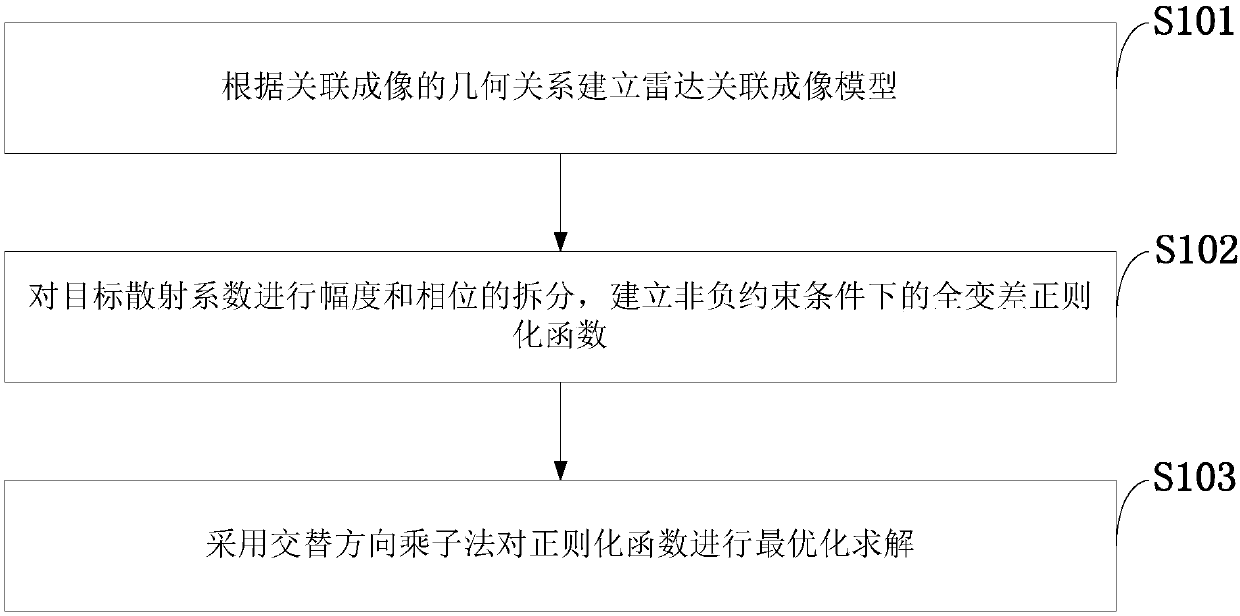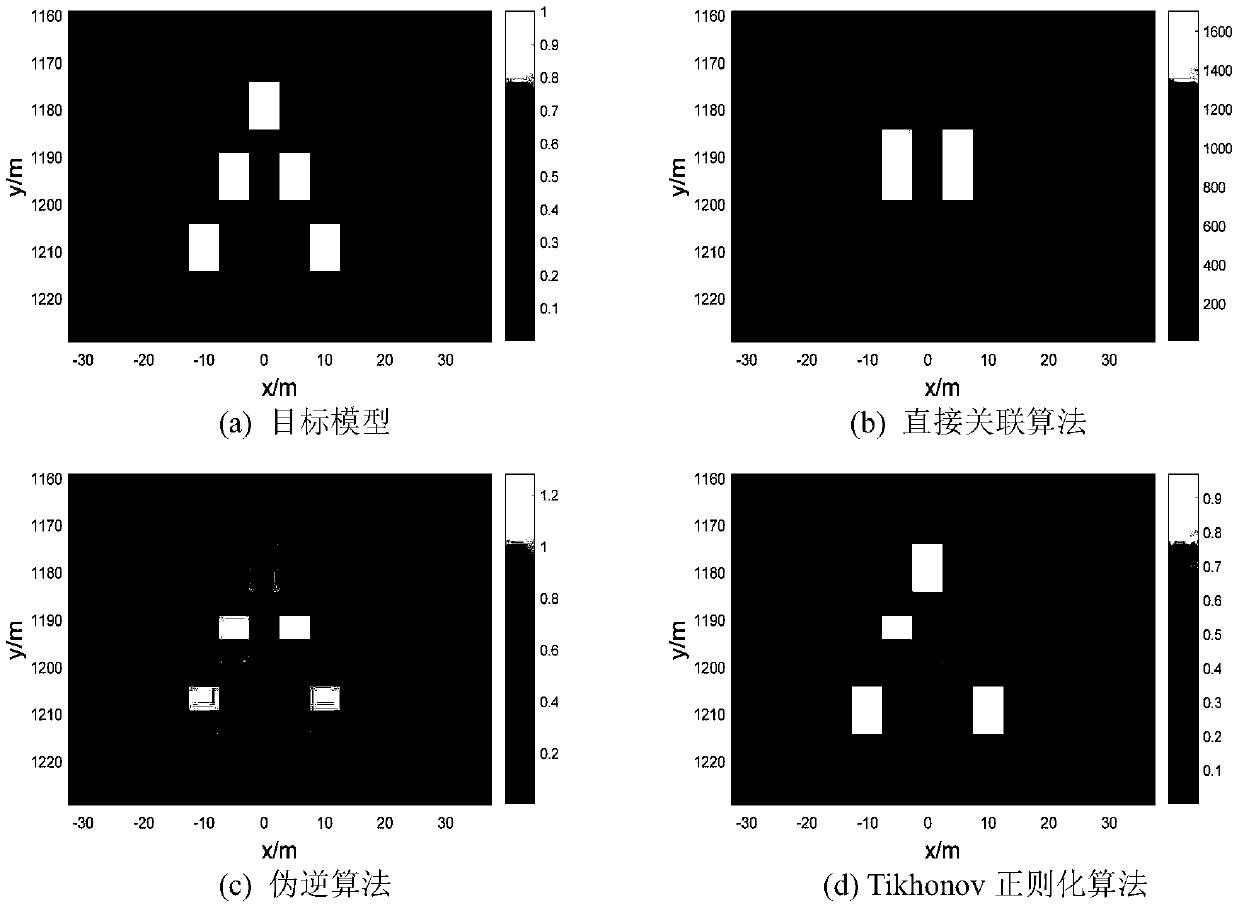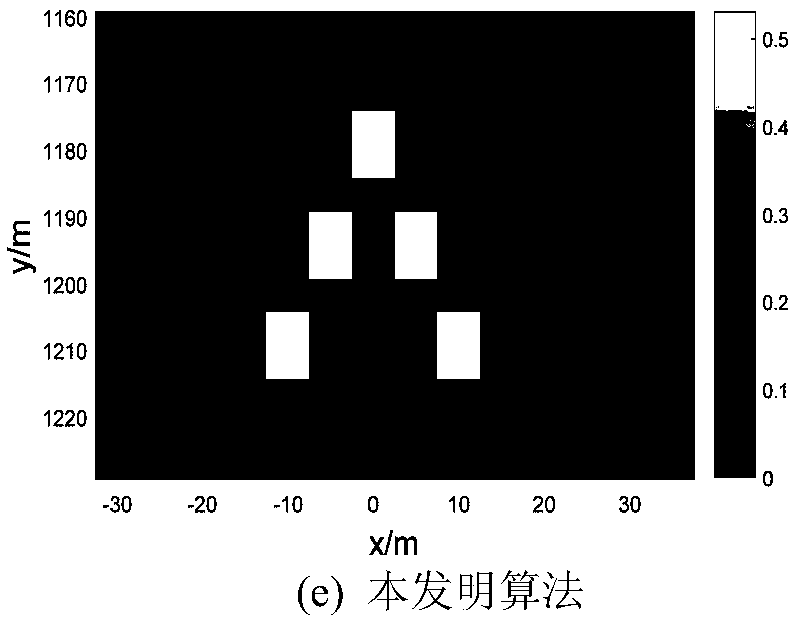Total variation regularization correlated imaging method based on nonnegative constrain on target scattering coefficient
A technology of target scattering coefficient and associated imaging, which is applied in the direction of using re-radiation, radio wave measurement system, radio wave reflection/re-radiation, etc.
- Summary
- Abstract
- Description
- Claims
- Application Information
AI Technical Summary
Problems solved by technology
Method used
Image
Examples
Embodiment Construction
[0082] In order to make the object, technical solution and advantages of the present invention more clear, the present invention will be further described in detail below in conjunction with the examples. It should be understood that the specific embodiments described here are only used to explain the present invention, not to limit the present invention.
[0083] The application principle of the present invention will be described in detail below in conjunction with the accompanying drawings.
[0084] Such as figure 1 As shown, the total variation regularized correlation imaging method based on the non-negative constraint of the target scattering coefficient provided by the embodiment of the present invention includes the following steps:
[0085] S101: Establishing a radar correlation imaging model according to the geometric relationship of correlation imaging;
[0086] S102: Splitting the amplitude and phase of the target scattering coefficient, and establishing a total v...
PUM
 Login to View More
Login to View More Abstract
Description
Claims
Application Information
 Login to View More
Login to View More - R&D
- Intellectual Property
- Life Sciences
- Materials
- Tech Scout
- Unparalleled Data Quality
- Higher Quality Content
- 60% Fewer Hallucinations
Browse by: Latest US Patents, China's latest patents, Technical Efficacy Thesaurus, Application Domain, Technology Topic, Popular Technical Reports.
© 2025 PatSnap. All rights reserved.Legal|Privacy policy|Modern Slavery Act Transparency Statement|Sitemap|About US| Contact US: help@patsnap.com



